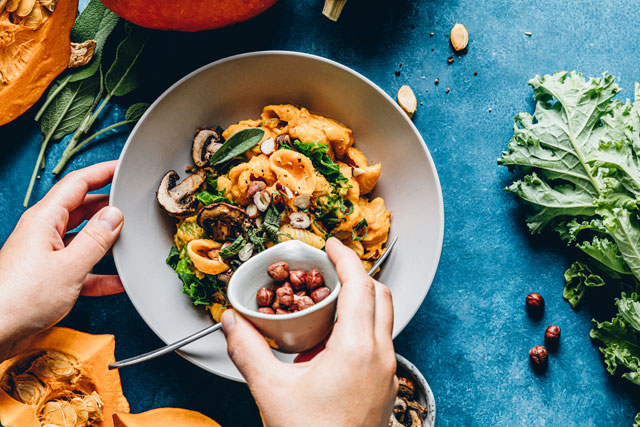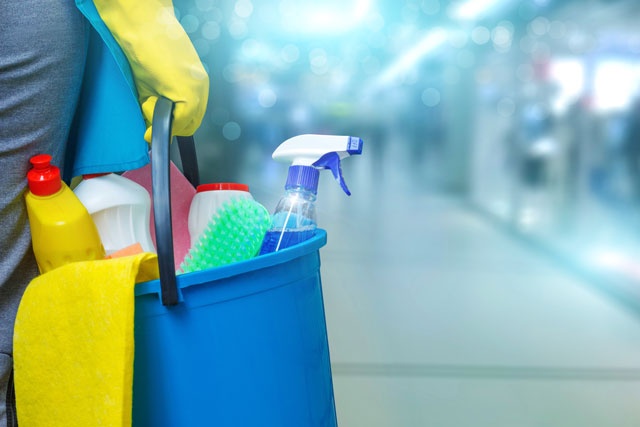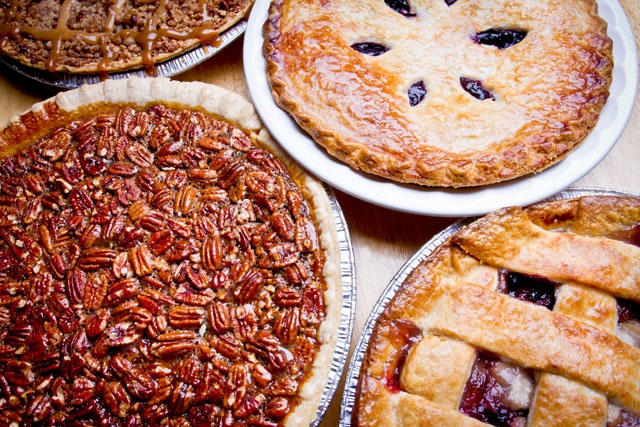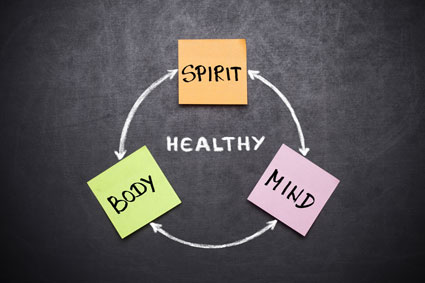Bread baking, just as any other culinary endeavor, is best completed with an arsenal of useful instruments which ensure optimal results. There are many kitchen utensils available, but in order to make the best bread without breaking the bank you must know which are essential and which are not.
Objectives:
1. Learn the differences between different types of mixing bowls.
2. Learn which utensils are most useful for bread baking.
Mixing Bowls:
There are many different types of materials commonly used for mixing bowls; but the three most common are ceramic, glass, and metal. All three are non-reactive and non-porous, in contrast to materials such as wood, so they do not compromise the flavors of the ingredients. Which one to choose is up to the baker, but there are certain benefits and drawbacks to each. What is most important is to be sure that you have an assortment in sizes ranging from two or three cups to four or five quarts. This will allow you to complete a range of tasks necessary for successful bread baking: activating the yeast, mixing ingredients, allowing dough to rise, and molding dough.
Ceramic:
Ceramic mixing bowl sets often come in vibrant colors and can add character to any kitchen. Due to their decorative nature, they can sometimes double as serving bowls. They are non-reactive. The down side to ceramic bowls is that they are prone to chipping which nullifies their decorative qualities. They are also not always oven or microwave safe; however, the high-fired ceramic bowls are much more durable than other earthenware and can be a longer-lasting alternative.
Glass:
Glass bowls have one major advantage over ceramic and metal variations: they are transparent. This is especially beneficial to bread baking because it allows the baker to see whether or not the dough has risen to a desired size without relying upon height alone. Glass is oven and microwave safe. Glass bowls are prone to breaking when dropped which is certainly a downside especially if you are cooking with small children.
Metal:
Metal bowls, specifically stainless steel, are widely available in any kitchen supply store and are usually the cheaper alternative to decorative ceramic bowls and impressive glass bowls. They are good for a variety of cooking tasks, but they are NOT microwave safe. Putting a metal bowl in the microwave could result in a catastrophic kitchen fire. Stainless steel bowls get very hot when filled with hot ingredients, and likewise they get equally cold in the opposite situation. Copper bowls are the best conductors of heat, and wonderful for whipping egg whites.
Dough Hooks:
Dough hooks come as an attachment for many hand and stand mixers. While they are not entirely crucial – you can bake a delicious loaf of bread without them – they are extremely useful. Dough hooks do the job of kneading which can be very tiresome by hand. They rapidly develop the gluten, the protein responsible for the fluffiness of wheat bread, and wipe clean easily without making a mess of the baking surface. Even artisanal bread bakers use large dough hook attachments to ensure that their bread turns out well every time.
Bench Scraper:
These handy little instruments are also known pastry scrapers or dough cutters. They help bakers to cut, manipulate and move dough quickly and easily over a flat work surface. Their blades are sharp enough to cut through dough easily but not sharp enough to risk scraping your countertop. They make it quite simple for bread bakers to divide loaves or rolls in a flash.
Rolling Pin:
A rolling pin tends to be a kitchen staple especially in the kitchen of a baker. It is an excellent tool in a number of kitchen activities, including making breads like biscuits, cinnamon rolls, unleavened breads, and pizza dough. A rolling pin is generally made of wood and has two handles at either end. It is used to roll out dough uniformly on a floured surface. Rubbing flour onto the rolling pin itself before use is a crucial step in order to prevent sticking. Many times, a baker will need to add flour to both the rolling pin and the work surface throughout the process.
Proofing Basket:
Proofing baskets are helpful in baking dough evenly without hand forming. They come in a variety of shapes and are used in to bake beautiful loaves of bread. Many times, they are used when dough is especially sticky. The baker simply lines the bowl with flour, oats or seeds and rolls the dough around the bowl to evenly coating its outer surface. This creates a magnificent crust and a perfectly shaped loaf of bread.
Standard Bread Pans (set of 2):
Many types of bread are baked in pans. These will create a familiar-looking loaf similar to those sold in the bread aisle of a typical supermarket. They are also used for sweet breads that do not use yeast and have a cake-like consistency, such as pumpkin bread, zucchini bread, and banana nut bread. They can also be used with breads traditionally baked on a flat surface in order to create a more uniform loaf of bread. Most recipes that specifically call for bread pans instruct the baker to use two pans which is why it is beneficial to have a set of two. Otherwise, the baker would need to wait for one loaf to cool, clean the pan and reuse it which could add over an hour to baking time. As with mixing bowls, bread pans can be made from a variety of elements: metal, glass, ceramic, and stoneware. All are effective in baking bread, but stone is the most popular with artisan bakers.
Baking Stone:
A baking stone is not essential to baking bread, but using one can make the difference between a dense, hard loaf and a springy, soft loaf. It is simply a stone that is placed in the oven and heated to an extremely high heat (550-500 degrees F) for about an hour before baking the bread. A baking stone can be purchased as such or it can even be an unglazed quarry tile purchased for very little from a home improvement store. These are wonderful tools to have around and can really set one loaf apart from another. The key is in the preheating of the stone.
Peel:
These wide, flat, long-handled paddles are used in conjunction with baking stones. They make it quick and easy for bakers to move and transfer bread in an oven especially when it is baking on a hot stone. They are most memorably used in pizza ovens, but can be used with any kind of stone-baked bread in any oven.
Measuring Cup Set:
Measuring cups can be found in any kitchen supply store and even in most grocery stores. They come in ceramic, plastic, glass, metal, silicone, and wooden varieties. Collapsible silicone cups are great for easy storage, but metal cups are the tried and true favorite of most kitchens. They are light, easy to use, and easy to clean. Make sure that your measuring cups have the measurements engraved on the handle. Amounts that are written on the handles can rub off over time which could potentially cause a kitchen mishap. A standard measuring cup set should include ¼ cup, ½ cup, ¹?? cup, and a full cup.
Measuring Cup (Pitcher):
Even if you have a measuring cup set, a glass measuring cup pitcher (up to two cups) is irreplaceable for pouring liquids. Many times a baker will use a measuring cup pitcher for liquids and a cup set for dry ingredients so that the wet and dry ingredients do not stick together and cause inaccurate measurements.
Teaspoon and Tablespoon Set:
Small spoons in a variety of sizes from ¼ teaspoon to a full tablespoon are essential to bread baking. Many recipes call for yeast, sugar, and salt which are so potent that only a tiny amount is needed.
Conclusion:
There are many kitchen items available at most home supply and grocery stores, but only a few good ones are needed to bake a great loaf of bread. Arm yourself with these essentials and you will be prepared for over 90% of bread recipes.
How to Ensure the Best Outcome
There are good loaves bread and there are great loaves bread. The difference is not always in the ingredients, but sometimes it lies in the technique and method. With the exact same ingredients, one baker could create a perfect loaf while another could end up with a dense rock. There are a few precautions anyone can take to ensure that each loaf is a great loaf.
Objectives:
1. Learn the best ways to prepare ahead for bread baking.
2. Learn ways to combat problems such as inaccurate oven thermometers.
3. Learn a few tricks to make sure your bread come out great every time.
Prepare! Prepare! Prepare!
One of the most important aspects of successful bread baking is preparing ahead of time. It does not matter how great your ingredients are if you forget one of them and have to run to the store while your dough dries, gets too warm, or too cold. The first and possibly most important step in bread baking is to prepare.
Read your recipe through (completely!) before heading to the store. After reading it through one time, go ahead and make a shopping list. Include any instruments or tools that you may not have on hand at home.
The best way to make the most efficient shopping list is to divide it based on the sections of the store, so you can easily keep track of what you have already picked up and what is yet to be found. This way you should not make the mistake of forgetting the yeast or the butter. It is never fun to have to go back to the store especially at night or around the holidays.
Always follow all the steps:
Many times a novice baker will skim over a recipe, look at the ingredients list, and throw it all into a bowl without regard for the steps involved. This is a one-way ticket to an imperfect loaf of bread. Each step is important in ensuring the best possible outcome, especially for the novice baker. For instance, checking the yeast freshness and properly kneading the dough are important steps to baking a delicious loaf of bread.
Oven Temperature:
Always be aware of your oven temperature! Some ovens run high and others low. It can be problematic if you are unsure of how accurate your oven thermometer really is. You can test the temperature of your oven without a thermometer. All you need is a baking dish and a little bit of granulated sugar.
Oven Temperature Test:
1. Preheat the oven to 375°.
2. Place a large spoonful of granulated sugar on a baking dish.
3. Place dish with sugar in the oven for 15 minutes.
4. If your oven is calibrated correctly, the sugar will melt. If it does not melt, your oven is running cold.
5. Follow the same steps again but with the oven temperature at 350°.
6. This time the sugar should not melt. If it does your oven is running hot.
If you have determined that your oven is calibrated then you are good to go, but if it is running hot or cool you will need repeat the test in 25° increments (up or down) until the sugar melts. This will allow you to be aware of the actual temperature of your oven. If the sugar melts when the thermometer reads 425°, for instance, then you can add 50° every time you bake. If you want to recalibrate the thermometer, most oven manuals have instructions for doing so. Check your temperature often!
Utilizing the Oven Light:
An oven light is an excellent tool to have at your disposal in any baking endeavor. Every time you open the oven you release heat. The longer it is open, the more heat is lost. Instead of checking your bread by opening the oven door, you should always use the oven light. This will allow the oven temperature to stay more or less consistent while baking loaf of bread.
Yeast Freshness Test:
Yeast is one of the key ingredients in bread, as you will learn in the next section, and a good baking practice is to always check the freshness of your yeast even if it is well within its "Best if Used By" date. The reason for this is that the yeast or packaging could become damaged in some way resulting in inactive yeast. The simple yeast freshness test is as follows:
1. Using a liquid measuring cup, dissolve one tsp of granulated sugar in half a cup of warm tap water 110°F-115°F
2. Stir in ¼ oz package of room temperature dry yeast (7g) until there are no yeast granules left on top of the water.
3. After ten minutes, check the yeast and water mixture again. It should have reached the one cup mark on the measuring cup and have a domed top.
Knead, Knead, and Knead Again:
The purpose of kneading bread dough is to activate the gluten. Glutens are the stringy bands of protein that give bread its structure and texture. Without kneading, they will remain inactive and the bread will not achieve its characteristic texture.
Kneading is one of the most important aspects of successful bread baking. It can be done either by hand or with and electric mixer adapted with dough hooks. Kneading can take quite a while (generally 10-12 minutes by hand or 8-10 with a mixer) which is why using a mixer has become a popular choice.
If you are kneading by hand, the technique is simple enough and there are a few ways to tell if your dough is properly and thoroughly kneaded. Hand dough kneading must be done on a thoroughly floured, flat surface. You will need to add flour as you move along in the process. First, take the dough ball and pull the furthest end up and toward you. Then press it down on the dough in front of you. Next, spread the down out lengthwise and pull up one side in order to press it down on the other half of the dough. Give the dough a quarter turn and repeat the process. Continue pulling, pushing and stretching the dough while adding flour until it is fully kneaded. You will need to put your body weight into it in order to successfully complete the process.
How to Tell When Dough is Fully Kneaded:
When you begin kneading, the dough will be lumpy. When it is done, it will be smooth and slightly tacky to the touch. When the dough is fully kneaded it will also hold its shape. If you place the dough into your hand and lift it in the air, it should retain its shape. If the dough slumps and spreads, then the gluten is not yet strong enough and you should continue kneading.
Another way to tell if the dough is thoroughly kneaded is called the poke test. In the poke test, the baker simply pokes the dough firmly and watches the result. If the dough springs back quickly, then it is ready. If it remains indented, then it needs more kneading.
Conclusion:
Tools and strategies are just as important to successful bread baking as the ingredients themselves. Always prepare ahead, make sure your oven is calibrated, follow all the directions, and have fun!


























